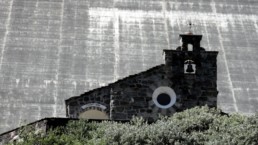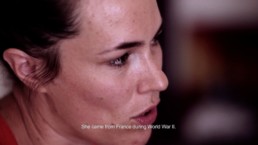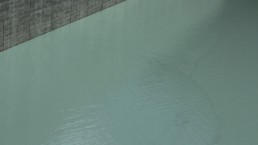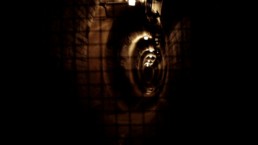The life around a fake lake
2016
Video HD, 40’30’’
Color, sound. Language: French, English subtitles.
The life around a fake lake is the video project of Nina Haab, who pursuits her research about the intersection between history, memories and fiction. The fake lake is the one created by the Grande Dixence Dam in Canton Valais, Switzerland, which was built between 1951 and 1966. The Grande Dixence Dam is indeed the tallest concrete gravity dam of the world, measuring 285 m high, with an extension of about 700 m long; because of its great dimensions, the dam is a real monument to human labour: more than 3’000 workers were called to its construction, coming from the same Swiss canton, but also from abroad. Italian and other alien immigrants, called by the possibility to work, gathered into the narrow valley and contributed to drastically change its landscape, as well as its sociological and economical aspects.
The Grande Dixence Dam has been at the center of numbers of artistic and documentary works; among others, Jean-Luc Godard, who actually worked there too, recorded it in his Opération Béton (1954) and Swiss photoreporter Hans Steiner realised incredible images of the concrete wall during the ‘50s. Nina Haab contributes to this visual tradition with a 40 minutes HD video presenting the stories of five witnesses whose lives are connected to the dam. Along with their commentaries, the camera shows us the valley, the dam and its fake lake, as well as the hidden heart of the grey, monumental surface: the tunnels inside it, going for a length of 32 km. A journey that goes from the outside to the inside and across the seasons, since the video starts in winter and ends in summer, in a progressive crescendo of cinematic rhythm. Haab’s interviewees, three men and two women, speak freely about their relationship to the dam, which can be direct or indirect: the artist decided to select them among different generations, the video beginning with the oldest witness and going backward with the ages.
The testimonies are rich and varied, balancing the silent and meditative frames showing the landscape around and inside the dam. Haab chose an aesthetic matching the classic documentary genre; however, the tells and stories we listen to are issued from the memories of these five people and are given without any factual nor historical frame. How can the viewer then be sure of what is told is true? This ambiguity is also present during the action of recollection of a memory, being a crucial point in Nina Haab’s practice. In order to stress it even more, she eventually sneaks radically fictitious elements in the documentary process; challenging her work’s own nature, Haab asks us to think deeply about what we are seeing and listening to: in The life around a fake lake the artificial basin of Dix is not the only manipulated consequence of the dam’s building.
Text by Elisa Rusca (art historian, Berlin)
A video by : Nina Haab
Image : Jean-François Vercasson
Editing : Nina Haab
Translation : Viviane Morey, Philippe van Essche
Production : Fonds cantonal d’art contemporain, DCS, Genève
Participants : Gérard Mayoraz, Gerta Mayoraz, Narcisse Seppey, Grégoire Seppey
Actress : Joséphine Strouba
https://vimeo.com/151774796
Password : InvestigatingMemory2016













